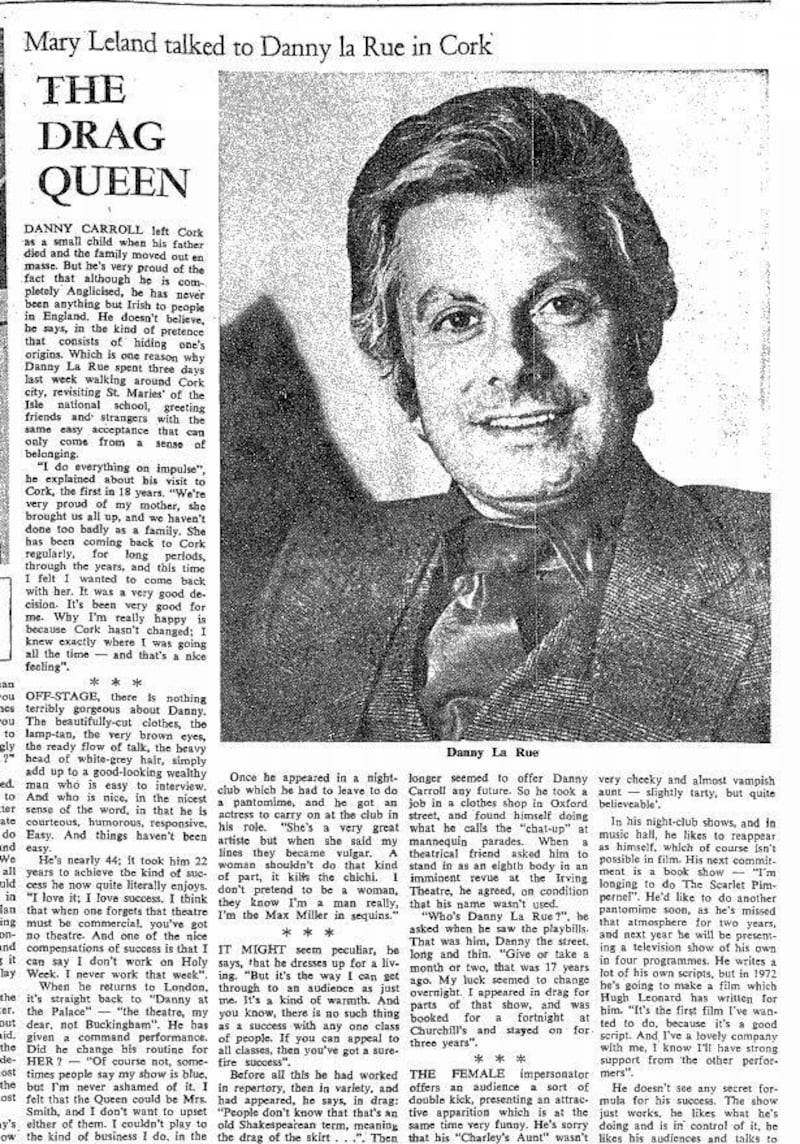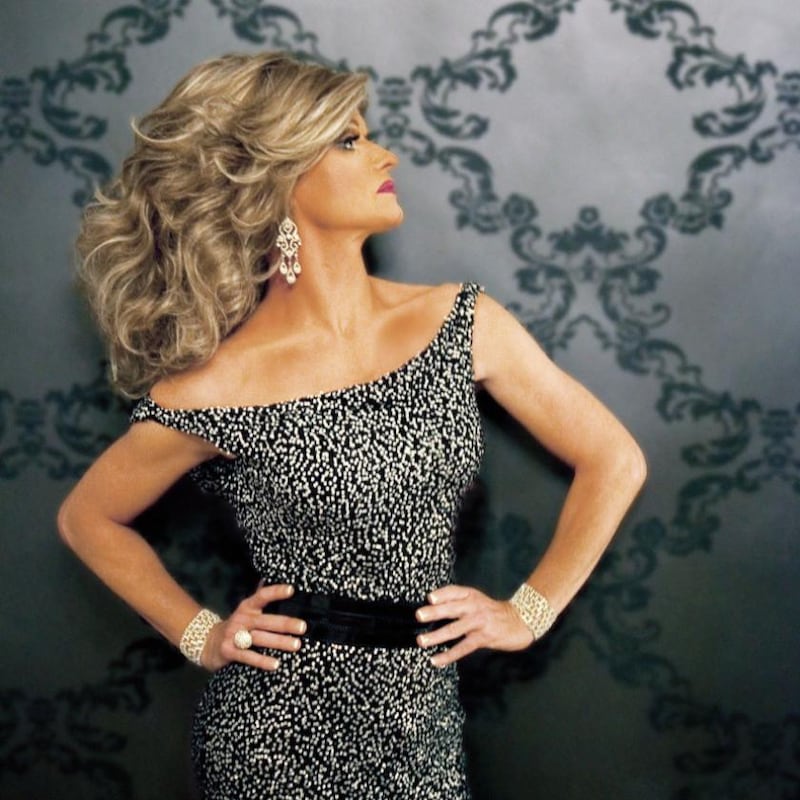The first series of RuPaul’s Drag Race UK wrapped up last week, marking another step in the remarkable mainstreaming of drag in recent years. The US version of the reality TV show initially gained a cult following, before winning four consecutive Emmys between 2016 and 2019.
In Ireland, The Irish Times's documenting of drag culture properly began in 1971, when Mary Leland interviewed Danny La Rue, who had just returned to his hometown of Cork for the first time in 18 years.
“Off-stage, there is nothing terribly gorgeous about Danny,” Leland wrote, “The beautifully-cut clothes, the lamp-tan, the very brown eyes, the ready flow of talk, the heavy head of white-grey hair, simply add up to a good-looking wealthy man who is easy to interview. And who is nice, in the nicest sense of the word, in that he is courteous, humorous, responsive. Easy.” In explaining drag, La Rue dug into his version of the origin of the term. “People don’t know that that’s an old Shakespearean term, meaning the drag of the skirt.”

“The female impersonator offers an audience a sort of double kick,” Leland wrote, “presenting an attractive apparition which is at the same time very funny.”
By the time the 1980s came around, drag featured on the pages of The Irish Times mostly because of American culture. In April 1985, David Nowlan reported on the state of on-and-off Broadway theatre in New York, which was struggling financially. In reviewing Harvey Fierstein’s Torch Song Trilogy, however, Nowlan wrote, “Mr Fierstein’s performance, as a drag queen in search of adoptive motherhood and a lasting stable relationship with a man he can love, is nothing short of extraordinary. It is gauche and gross and way over the top in amateurishness, yet so charged with energy and sincerity that it works and moves us in its own grotesque manner.”
In April 1992, Michael Dwyer reported from Los Angeles on the protests by GLAAD and Queer Nation against the film Basic Instinct and its accusations of homophobia. “The activists were also angered by the Oscar electorate’s sins of omission, by ignoring the internationally praised documentary on young New York drag queens, Paris is Burning, and Gus Van Sant’s richly accomplished and deeply touching picture of two young male hustlers in My Own Private Idaho.”

At the dawn of 1997, Bernice Harrison’s On The Town social column reflected on the eclectic crowd that rang in the new year at the Chocolate Bar in the POD complex on Harcourt Street. Louis Walsh, Ronan Keating, Stephen Gately, Peter Aiken and Eddie Irvine were hanging out, but one table in particular stood out to Harrison – seated at it were Robbie Williams, footballer Lee Sharpe, Kate Moss’s little brother Nick, and the drag queen Lily Savage. All had flown into Dublin for the party, “because they heard it would be the best place to ring in the new year”. 1990s Dublin was certainly a different place.
Irish drag queen Panti’s first appearance in The Irish Times was, understandably, in the same social diary column, this time written by Louise East in April 1997. “It was a fairly surreal night at The Kitchen on Wednesday, what with the dancefloor turned into a pool, the VIP area a casino and the six foot two Panti just one of the pouting drag queens prancing around.”

The following month, Panti was in the pages again, this time at the NCAD fashion degree show in the RDS, “All the collections were greeted with applause, but none more so than Leonie Prendergast’s ‘Porcine Glamour’, whose accessories collection was modelled by drag queens, Miss Panti and Shirley Temple Bar, winner of this year’s Alternative Miss Ireland, as well as designer Niall Sweeney.”
And so we come full circle, back to RuPaul in the newspaper in August 1997. The very exciting news landed that a particular make-up brand had finally made it’s way to these shores. “Glam girls have been gagging for it for years but the wait is now over,” Louise East wrote.
“MAC make-up has arrived in Ireland. Those with an eye on the high street will already have noticed that the rather paradoxical circular corner of Brown Thomas has been taken over by a fleet of glamorous make-up artists and counters more reminiscent of a gallery than a shop. If you’re worried that such a crucial event in the fashion calendar happened without a happening event, relax. RuPaul, the queen of all drag queens and front 'girl' for the cosmetics, together with MAC founder Frank Toskan, will be arriving in Ireland on September 9th for a party that promises to be sleeker than chic.”
What a ball.










